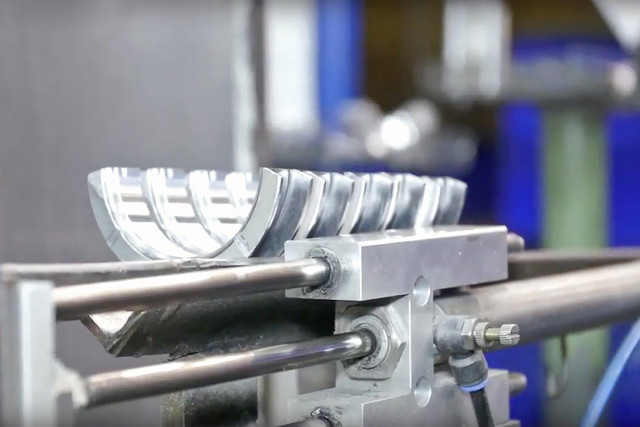Rod and main engine bearings are some of the most critical components to the life and performance of your engine, and few have a better understanding of this concept than King Engine Bearings [1]. For over half a century King has been producing one of the most extensive varieties of high quality engine bearings for just about every market imaginable, from automotive racing to aviation, marine and heavy equipment.
In the video above, King Engine Bearings’ Performance and Technical Manager, Ron Sledge, explains the advantages and drawbacks of the two most common types of engine bearings – lug and lugless. In addition, Sledge also introduces the company’s innovative new locating lug design, the “SmartLug.”
Lugless bearings (left) are generally found in newer engine designs as a way of cutting costs, lugged bearings (center) are currently the most common type of bearing for the aftermarket, and King Engine Bearings' new "SmartLug" bearing solution (right).
More and more OEM automotive manufacturers have been producing engine bearings that do not utilize a locating lug (tang) as a way of cutting costs. This requires a modification to the main bearing bores and connecting rods, which ultimately results in a change to the design of the bearing as well; creating confusion on bearing orientation, alignment and selection for engine builders.
Many believe that the purpose of the locating lug is to prevent the bearing from spinning during engine operation, but in reality if the proper crush spec is not met during assembly the bearing will spin regardless. The only purpose for a lug is to be used as an aide to engine builders to accurately position the bearing with less chance for error.
For a more detailed explanation of lug, lugless and King’s new “SmartLug” bearings, be sure to watch the full video above. [3]
[3]